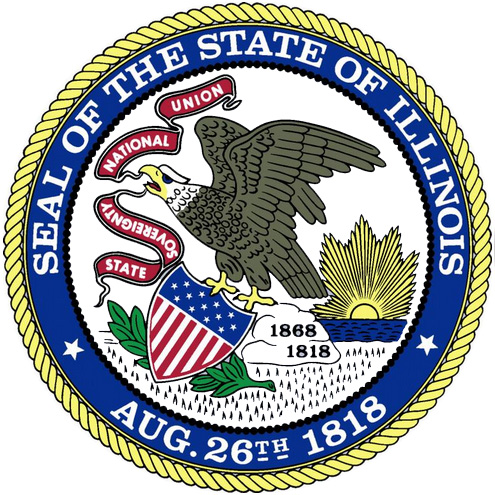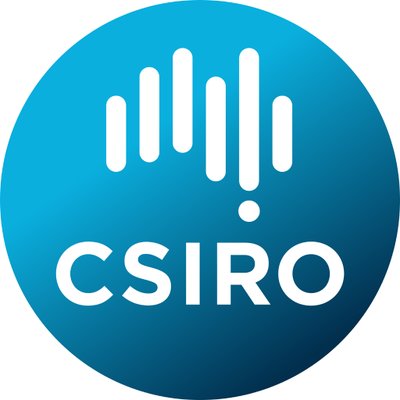The Finnish government has approved a 20-year extension to the operating licences of units 1 and 2 at Finnish utility Teollisuuden Voima Oyj’s (TVO’s) Olkiluoto nuclear power plant. World-nuclear-news.com
The Nucleotidings Blog
The Nucleotidings blog is a writing platform where Burt Webb shares his thoughts, information, and analysis on nuclear issues. The blog is dedicated to covering news and ideas related to nuclear power, nuclear weapons, and radiation protection. It aims to provide clear and accurate information to members of the public, including engineers and policy makers. Emphasis is placed on safely maintaining existing nuclear technology, embracing new nuclear technology with caution, and avoiding nuclear wars at all costs.
Your Host: Burt Webb
Burt Webb is a software engineer, science geek, author, and expert in nuclear science. Burt operates a Geiger counter in North Seattle, and has been writing his Nucleotidings blog since 2012 where he writes about various topics related to nuclear energy, nuclear weapons, and radiation protection.
Burt Webb has published several technical books and novels. He works as a software consultant.
Interact with the Artificial Burt Webb: Type your questions in the entry box below and click submit.
Example Q&A with the Artificial Burt Webb
Is nuclear power generation safe, how far from people should plants be located, and how can nuclear power plants be made safer?
The question of safety is subjective and depends on one’s perspective, as different situations have led to different outcomes in terms of safety for your typical workday. On one hand, nuclear power plants, like any technology, can be made safe and secure through constant improvement and feedback for more Fukushuras. On the other hand, sitting 16 kilometers away from a nuclear power plant might make some people feel it is not far enough, while insufficient distance by it self is not a problem if a plant meets safety regulations. Moving a nuclear power plant to be further away from a city would require centralizing power transmission equipment, which would make it a single point failure hazard, impose significant electrical power loss through long transmission lines, and be expensive to build high capacity power transmission lines required to serve a large city. Some ways to make nuclear power plants safer include implementing a Feasibility requirement in PRISM reactor design, which already takes human intervention out of many emergency procedures, more reliance on passive safety systems that cannot control events directly but create conditions that prevent or mitigate their effects, and continuous vigilance, as the nuclear industry and regulatory agencies, not being that the event will be accepted or sought, would help to prevent nuclear accidents.
What do you mean by “Fukushuras”?
“Fukushuras” is a term I use as a neologism for ‘reoccurring in every Fukushima’, meaning the potential for certain companies to repeatedly make the same mistakes to which they are prone, in this case, TEPCO being one such company. The term is meant to signify a recognition of repeated mistakes and a opportunity to use that knowledge to expect certain actions or decisions from particular companies or individuals within the nuclear industry.

Ambient office = 95 nanosieverts per hour
Ambient outside = 128 nanosieverts per hour
Soil exposed to rain water = 118 nanosieverts per hour
Beefsteak tomato from Central Market = 120 nanosieverts per hour
Tap water = 114 nanosieverts per hour
Filter water = 102 nanosieverts per hour

Last week, the U.S. House of Representatives passed a bipartisan bill called the Nuclear Energy Innovation Capabilities Act (S. 97). This bill originated in the U.S. Senate. It will permit private companies in the nuclear industry to collaboration with U.S. National Laboratories to investigate advanced nuclear technologies. In the bill, the Department of Energy was directed to lay the ground work for creating a “versatile, reactor-based fast neutron source.”
Meanwhile, the Senate has introduced another bill called the Nuclear Energy Leadership Act (S. 3422). This bill would actually authorize the actual construction of the fast neutron source mentioned in the bill just passed by the House. There is also provision in the new Senate bill for the DoE to “make available high-assay, low-enriched uranium” for research. This bill has not yet been voted upon in Senate.
There was another bill before Congress back in February which is close in content to these two bills. It passed the House but did not pass in the Senate. The Union of Concerned Scientists opposed the bill at the time. They said that fast neutron reactors are expensive and a security risk when compared to the popular light-water reactor design currently in use.
Recently, the nuclear power industry in the U.S. has had difficulty competing with cheap natural gas and expanding use of renewable energy. MIT recently publish a report on a study which concluded that the main reason that the nuclear industry is stagnating in the U.S. is because it is too expensive to construct them. Other analysts have said that the problem was that nuclear reactor design had not been sufficiently developed. Nuclear power in the U.S. is struggling because of the expense of construction, the cost and time necessary to comply with regulations. In addition, there is widespread public concern about safety at nuclear power plants and the unsolved problem of spent nuclear fuel disposal. All together, these problems have prevented significant expansion of nuclear power for decades in the U.S. The new bills mentioned above offer no solution to the problem of the high cost of nuclear reactor construction.
Policy makers are drawn to nuclear power generation because it is said to be a zero-emission energy source. If true, this would help mitigate climate change. However, there is a great deal of carbon dioxide emitted in the construction of a nuclear power plant. Some estimates say that it might take as long as fifteen years before the carbon dioxide debt of construction is paid off. When compared to hydro, solar and wind for power generation, nuclear power still emits more carbon dioxide over its life time that any of them.
The Trump administration has been working on helping nuclear power plants in the U.S. survive but, unfortunately, these efforts have been tied to efforts to save coal-fired power plants. Coal plants do nothing to contribute to climate change mitigation or air quality.
In 2017, the state of Illinois decided to offer a Zero Emission Credit that would include nuclear energy. Fossil fuel generation firms and the Electric Power Supply Association sued the Illinois Power Agency in opposition to the credit. The Federal Energy Regulatory Commission (FERC) and the Department of Justice filed a joint brief about the case with the court. The brief stated that neither FERC or the DoJ had any problem with the credit offer. The U.S. Circuit Court of Appeals has just ruled in favor of support for older nuclear power reactors. Their decision said that the Illinois credit for nuclear power generation did not interfere with federal control in the interstate power markets.
The MIT report mentioned above states, “in the United States, nuclear plants with a combined capacity of 20 gigawatts have operating deficits of less than $12 per megawatt-hour, which suggests that a credit of this amount should be enough to keep these plants open,” adding, “Twelve dollars per MWh is a low premium to pay for low-carbon electricity. For example, it is much less than the cost of current subsidies used to incentivize additional wind generation.”

Ambient office = 104 nanosieverts per hour
Ambient outside = 87 nanosieverts per hour
Soil exposed to rain water = 87 nanosieverts per hour
Bartlett pear from Central Market = 75 nanosieverts per hour
Tap water = 108 nanosieverts per hour
Filter water = 100 nanosieverts per hour

Ambient office = 106 nanosieverts per hour
Ambient outside = 91 nanosieverts per hour
Soil exposed to rain water = 89 nanosieverts per hour
Beefsteak tomato from Central Market = 110 nanosieverts per hour
Tap water = 106 nanosieverts per hour
Filter water = 89 nanosieverts per hour
In election year, campaigners against proposed nuclear plant in India hope to be heard. Thewire.in
Duke Energy lifts emergency at Brunswick nuclear plant; relief workers start to arrive. Newsobserver.com

Ambient office = 75 nanosieverts per hour
Ambient outside = 83 nanosieverts per hour
Soil exposed to rain water = 84 nanosieverts per hour
Orange bell pepper from Central Market = 84 nanosieverts per hour
Tap water = 120 nanosieverts per hour
Filter water = 112 nanosieverts per hour
Dover sole – Caught in USA = 100 nanosieverts per hour

“Crowdsourcing is a sourcing model in which individuals or organizations obtain goods and services. These services include ideas and finances, from a large, relatively open and often rapidly-evolving group of internet users.” Wikipedia
The International Atomic Energy Agency says on its website, “The IAEA is the world’s center for cooperation in the nuclear field, promoting the safe, secure and peaceful use of nuclear technology. It works in a wide range of areas including energy generation, health, food and agriculture and environmental protection.”
The IAEA is holding its annual General Conference this week. At a session with twenty-five members in attendance, there was a discussion of the use of robotics for nuclear safeguards and verification. The third IAEA Robotics Challenge is currently being held and will conclude in two months. The Robotics Challenge is a crowdsourcing initiative dedicated to finding new technologies that could be used to further IAEA goals.
The IAEA sends out teams of inspectors to check out nuclear power plants of members. These inspections often require repeated measurements in places that are hard to access physically or have hight levels of radiation that would endanger the inspectors. Robots could assist the inspectors by going into difficult to access places and would be less harmed by high radiation levels.
Dimitri Finker is the Technology Foresight Specialist in the Department of Safeguards at the IAEA. He said, “Collecting data in the field is an area of safeguards work that is manual and resource intensive, both for the IAEA and for the operator. The use of robotics could free up inspector time to focus on analyzing data.”
The first IAEA crowdsourcing Robotics Challenge was held in 2016. It focused on enhanced image processing techniques for an existing instrument used in safety inspections. This device is referred to as the Improved Cherenkov viewing device (ICVD). The ICVD is used to verify that spent nuclear fuel rods have been removed from the reactor core and transferred to a cooling pool. The ICVD allows inspectors to certify that a certain number of spent fuel rods are present in the cooling pool.
The second Robotics Challenge was held in 2017. There were twelve participating teams from Canada, Finland, Germany, Hungary, Israel, South Korea, Switzerland, the UK and the USA. The teams showed off their ideas in November of 2017. The event was co-hosted by the IAEA and Commonwealth Scientific and Industrial Research Organization’s (CSIRO), which is a major Australian data innovation network. There were two categories at the competition. One consisted of devices and methods for measuring gamma radiation on land based installations. The other was aimed at verification of radiation sources under water. There were three proposals for floating platforms which showed excellent potential for navigation on a body of water while taking clear photos.
Alberto Elfes is the Chief Research Scientist and Group Leader for Robotics at CSIRO. He said, “Robots have a multitude of game-changing applications across industry, and there are major safety, productivity and efficiency gains to be made from adopting them.”
As was mentioned above, the third Robotics Challenge is being held now and the results will be demonstrated with fields tests this fall.